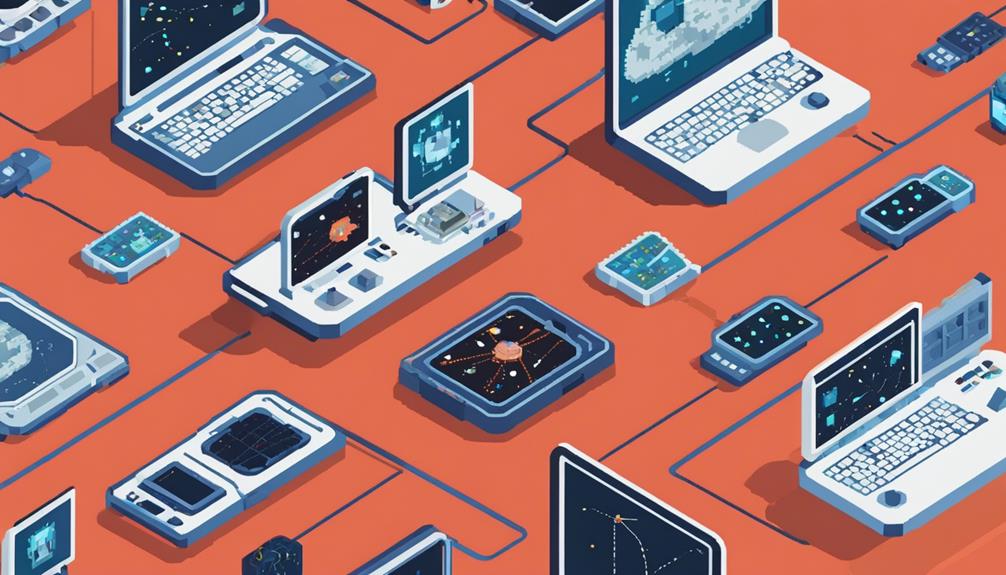Satellite-Enabled Internet of Things (IoT) stands at the forefront of technological advancement, merging the capabilities of satellite networks with IoT devices to transcend the limitations of terrestrial infrastructure. The integration of these technologies opens up a realm of possibilities for seamless global connectivity and data exchange. As we explore the intricacies of this convergence, it becomes apparent that satellite-enabled IoT has the potential to revolutionize industries and redefine the way we interact with technology on a global scale.
Key Takeaways
- Satellite IoT revolutionizes global connectivity for seamless data exchange.
- Enables real-time monitoring and control in remote and challenging environments.
- Enhances operational efficiency and safety measures across various industries.
- Overcomes connectivity limitations with cost-effective solutions for ubiquitous network coverage.
Satellite IoT Overview
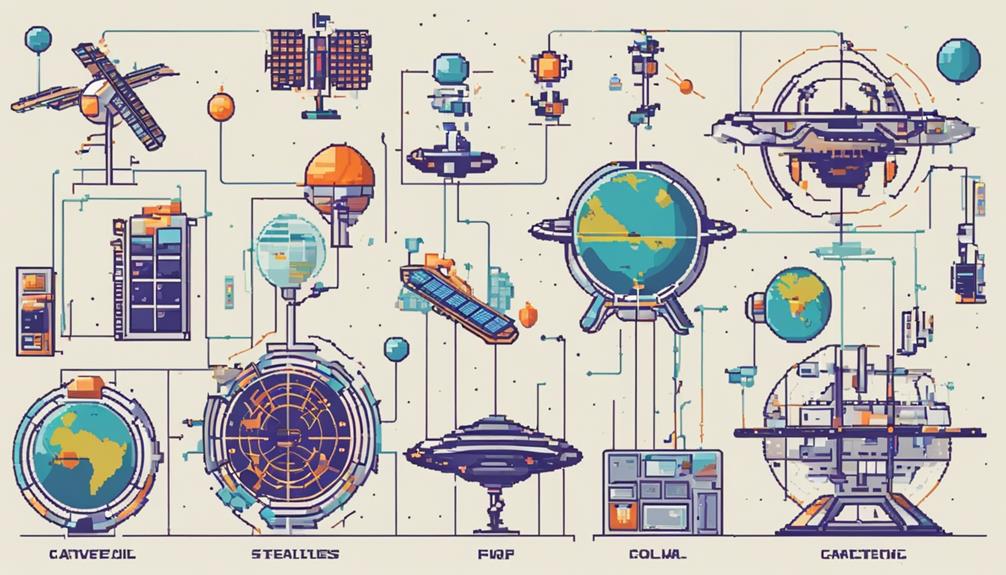
Satellite IoT technology revolutionizes global connectivity by leveraging a network of Low Earth Orbit satellites to enable seamless communication and data exchange beyond traditional terrestrial limitations. This innovative approach to connectivity offers unparalleled coverage and reliability, making it ideal for industries such as maritime, transportation, agriculture, oil and gas, and construction. The backbone of this technology lies in the network of satellites, with Iridium's constellation of 66 Low Earth Orbit satellites ensuring true global coverage.
Satellite IoT connectivity provides organizations with peace of mind through global asset monitoring and management capabilities. By extending connectivity beyond terrestrial infrastructure, satellite IoT enables real-time tracking, monitoring, and control of assets in remote or challenging environments. This technology is instrumental in facilitating efficient operations, enhancing safety measures, and optimizing resource utilization across various industries.
Moreover, satellite IoT connectivity plays a crucial role in expanding the reach of the Internet of Things (IoT) by overcoming traditional connectivity limitations. It enables devices and sensors in remote or mobile locations to stay connected and exchange data seamlessly. This global coverage ensures that data can be transmitted reliably and securely, regardless of the geographical location of the assets being monitored. As a result, satellite IoT emerges as a key enabler for driving digital transformation and unlocking new possibilities for interconnected systems on a global scale.
Iot Vs. IIoT Distinction
In distinguishing IoT from IIoT, it is essential to understand that while IoT focuses on connecting everyday objects for data exchange, IIoT specifically targets industrial applications, integrating IoT devices to enhance data collection and analysis within industrial settings. The key differentiating factors between the two lie in their objectives, with IoT emphasizing consumer applications and IIoT prioritizing industrial efficiency and automation. As industries increasingly embrace digital transformation, the distinctions between IoT and IIoT become crucial for tailored technology implementations and optimized operations.
Iot Vs IIoT Overview
The distinction between Internet of Things (IoT) and Industrial Internet of Things (IIoT) lies in their respective applications and focuses within the realm of connected devices and data utilization. IoT primarily connects various devices for data exchange, while IIoT integrates IoT devices in industrial settings to enhance data collection and analysis, enabling real-time monitoring and automation aligned with industry 4.0 objectives. Here is a comparison table to illustrate their key differences:
| Aspect | IoT | IIoT |
|---|---|---|
| Application Focus | General consumer devices and applications | Industrial and manufacturing environments |
| Connectivity | Primarily relies on standard networks | Utilizes advanced connectivity options like satellite |
| Data Utilization | Focuses on consumer-oriented data | Emphasizes industrial data analytics and automation |
This table provides a concise overview of the contrasting features between IoT and IIoT.
Key Differentiating Factors
The distinguishing factors between IoT and IIoT encapsulate their specific applications, data utilization approaches, and operational objectives within connected environments. IoT primarily focuses on connecting physical objects globally through terrestrial networks for data exchange, catering more to consumer needs. In contrast, IIoT integrates IoT devices in industrial settings, leveraging satellite IoT solutions for enhanced data collection and analysis to optimize processes and operations. While IoT deployment emphasizes connectivity advancements, storage capabilities, and cost reductions, IIoT enables real-time monitoring, automation, data analytics, and productivity improvements in line with industry 4.0 objectives. The distinction between IoT and IIoT becomes evident in their target industries, data processing capabilities, and operational objectives, showcasing the evolution from consumer-centric IoT to industrial-focused IIoT.
Satellite IoT Operation
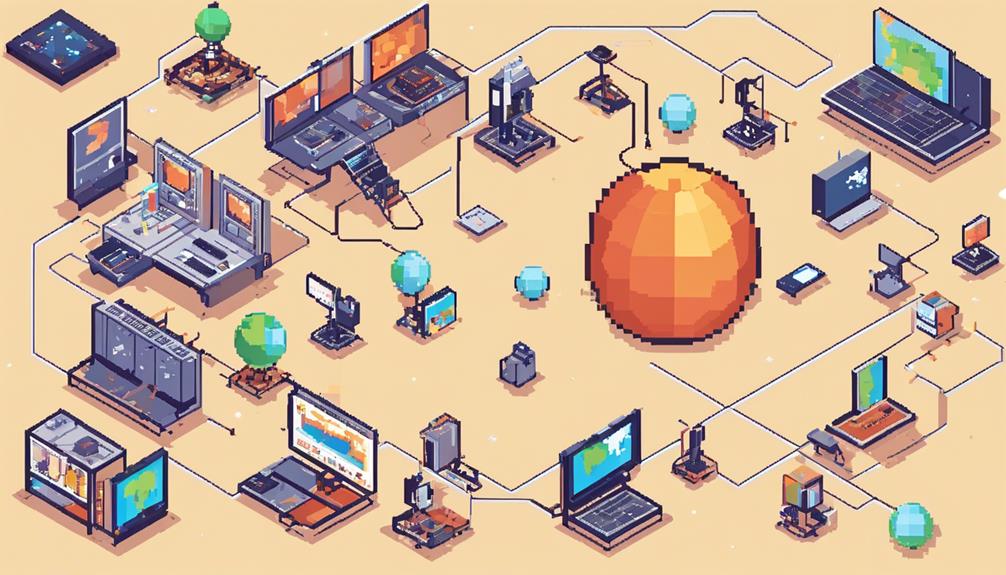
Satellite IoT operations provide unparalleled global connectivity advantages by enabling communication with IoT devices in remote locations. This technology ensures low latency communication, facilitating real-time data transmission between devices and satellites. Moreover, Satellite IoT operations offer extensive coverage even in the most remote areas, making it ideal for applications requiring constant connectivity and data exchange.
Global Connectivity Advantages
In the realm of global connectivity advantages within satellite IoT operations, an essential feature lies in the seamless integration of satellite networks with IoT devices for unparalleled coverage and data exchange capabilities. Satellite IoT enables IoT devices to connect directly to satellites in space, ensuring global coverage and seamless connectivity. The data gathered by these IoT devices is processed, packaged, and transmitted through satellites to ground stations for further analysis. This technology facilitates remote monitoring, automation, and data analysis across various industries, offering crucial advantages in areas where terrestrial infrastructure is limited. Satellite IoT operations play a vital role in ensuring continuous connectivity for IoT applications worldwide.
- Enhanced global coverage through satellite networks
- Seamless connectivity between IoT devices and satellites
- Remote monitoring and automation capabilities
- Facilitates data analysis across diverse industries
Low Latency Communication
Within the realm of satellite-enabled Internet of Things (IoT) operations, the optimization of low latency communication stands as a critical component for real-time data exchange and enhanced operational efficiency. Satellite-enabled IoT operations ensure swift data exchange between IoT devices and satellite communication terminals, enabling real-time monitoring and reducing delays in data transmission. This low latency communication is essential for time-sensitive applications across industries, supporting quick decision-making and enhancing system responsiveness. The direct connection between IoT devices and satellites allows for efficient processing and transmission of data to ground stations, facilitating automation and data analytics. The table below highlights the key aspects of low latency communication in satellite IoT operations:
| Aspect | Description |
|---|---|
| Swift Data Exchange | Direct connection between IoT devices and satellites ensures quick data transfer. |
| Real-time Monitoring | Enables real-time monitoring of IoT devices for instant insights. |
| Operational Efficiency | Enhances operational efficiency through reduced latency in data transmission. |
| Time-sensitive Applications | Supports applications requiring immediate data processing and decision-making. |
| System Responsiveness | Improves overall system responsiveness by minimizing delays in data exchange. |
Remote Area Coverage
Enabling connectivity in remote areas with limited terrestrial coverage, satellite IoT operations play a pivotal role in facilitating seamless data exchange for various industries. Through satellite communications, IoT devices establish direct connections to satellites in space, ensuring reliable data transmission even in challenging terrains. The data collected by these IoT devices is then transmitted via satellites to ground stations for further analysis, providing vital insights for decision-making processes. Satellite IoT operations offer global coverage, benefiting industries such as agriculture, energy, and maritime by revolutionizing networking capabilities. This technology enhances remote monitoring and data analysis, making it an indispensable tool for businesses operating in geographically isolated locations.
IIoT Connectivity Examples
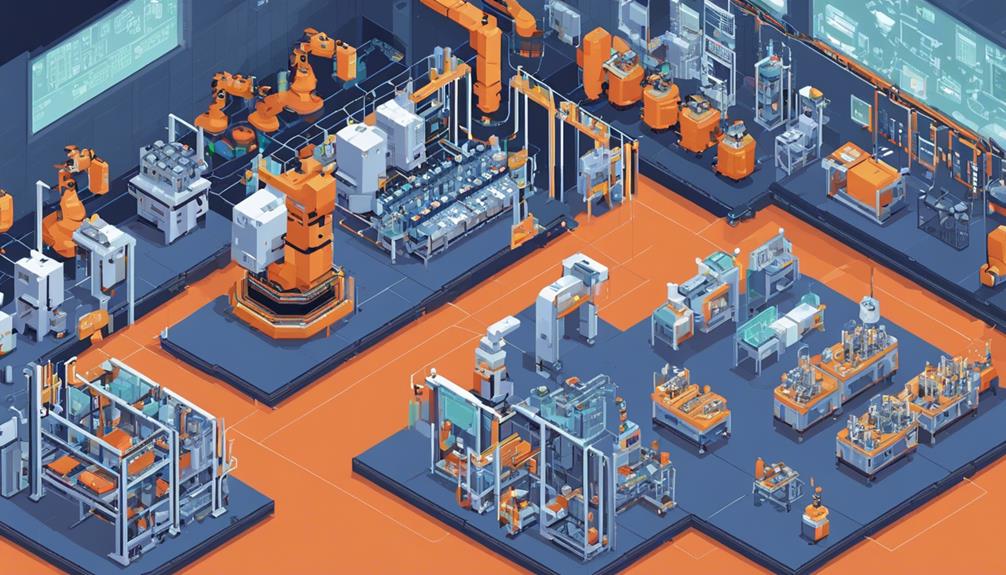
Several instances showcase the practical applications of IIoT connectivity in various sectors, such as real-time monitoring for predictive maintenance of industrial equipment. By leveraging IIoT solutions, industries can monitor the health and performance of machinery continuously, enabling them to predict and prevent potential failures before they occur. This proactive approach to maintenance not only minimizes downtime but also reduces maintenance costs significantly.
Moreover, IIoT enables remote control of critical infrastructure systems, allowing operators to manage and optimize operations from a centralized location. In manufacturing, IIoT applications streamline production processes by utilizing data analytics to identify areas for improvement and automation to enhance efficiency.
In energy production, IIoT connectivity ensures the smooth operation of facilities and effective grid management. By collecting and analyzing data in real-time, energy companies can make informed decisions to enhance productivity and sustainability.
Additionally, IIoT solutions play a crucial role in transportation by enhancing fleet management through real-time tracking and monitoring capabilities. This enables companies to optimize routes, schedule maintenance effectively, and improve overall fleet performance. Overall, IIoT connectivity examples demonstrate the transformative impact of leveraging data and connectivity in industrial settings to drive efficiency, productivity, and cost savings.
Future Applications of Satellite IoT
Satellite IoT technology is poised to revolutionize connectivity solutions by extending network coverage to remote and challenging environments, enabling enhanced operational efficiency and productivity across diverse industries. The future applications of satellite IoT hold immense potential for transforming the way businesses operate. Here are some key areas where satellite IoT is expected to make a significant impact:
- Global Satellite Coverage: Satellite IoT enables global connectivity, bridging the gap in areas where terrestrial networks have limitations.
- Terrestrial and Satellite Integration: The integration of terrestrial and satellite networks will provide seamless connectivity, ensuring continuous data transmission in various environments.
- Remote Monitoring: Satellite IoT allows for remote monitoring of assets and operations in real-time, facilitating proactive decision-making and enhancing overall efficiency.
- Overcoming Connectivity Limitations: By leveraging satellite technology, businesses can overcome connectivity limitations in remote regions, enabling them to stay connected and operational regardless of location.
The convergence of satellite IoT with terrestrial IoT is set to redefine how industries approach connectivity and data management, paving the way for more efficient and resilient operations. As businesses increasingly rely on real-time data for decision-making, satellite IoT emerges as a critical enabler for achieving connectivity on a global scale.
Sateliot: Global Connectivity Solution
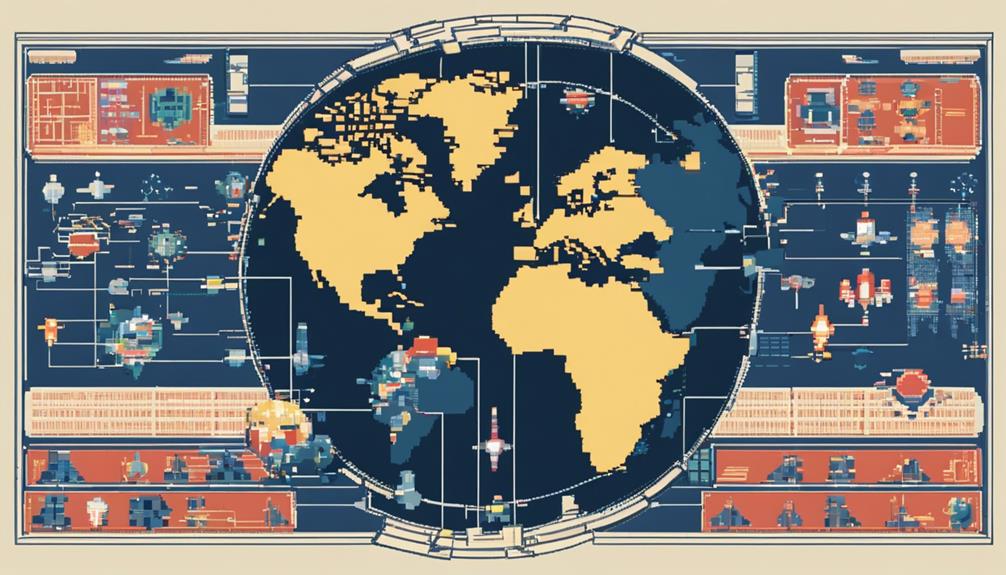
The evolution of connectivity solutions in remote and challenging environments has been significantly influenced by the emergence of Sateliot as a global connectivity solution provider offering cost-effective tech solutions for seamless satellite connectivity. Sateliot's innovative approach enables global connectivity by bridging the gap between traditional terrestrial infrastructure limitations and the need for ubiquitous network coverage. Through satellite-enabled IoT solutions, Sateliot ensures that standard cellular devices can seamlessly connect across industries such as agriculture, maritime, energy, transportation, and logistics.
Sateliot's impact is particularly notable in sectors like agriculture, where remote monitoring and data collection are essential for optimizing crop yields and resource management. In maritime industries, Sateliot facilitates real-time tracking and communication, enhancing safety and operational efficiency. Moreover, in the energy sector, Sateliot's services support remote monitoring of critical infrastructure, ensuring continuous operations and preventive maintenance.
Environmental Sustainability With Iot
In the realm of environmental sustainability with IoT, a key focus lies in the development of energy-efficient IoT devices and the implementation of waste reduction strategies. These initiatives are pivotal in minimizing the carbon footprint of IoT operations and promoting a more sustainable approach to technology utilization. By integrating energy-saving mechanisms and adopting eco-conscious practices, IoT can significantly contribute to the preservation and protection of the environment.
Energy-Efficient Iot Devices
Efficient energy utilization in IoT devices through the incorporation of low-power sensors and optimized data transmission processes is paramount for promoting environmental sustainability within the Internet of Things ecosystem.
- Energy-efficient IoT devices reduce power consumption by utilizing low-power sensors and optimizing data transmission processes.
- IoT devices with energy-saving features like sleep modes and efficient data processing contribute to environmental sustainability.
- Energy-efficient IoT devices help minimize carbon footprint and support green initiatives in various industries.
- Implementing energy-efficient IoT solutions leads to cost savings on energy bills and promotes eco-friendly practices.
Waste Reduction Strategies
With the integration of IoT technology, waste reduction strategies are revolutionizing environmental sustainability efforts through real-time monitoring and data analysis in various industries. Connected sensors in waste management systems enable optimized collection routes and schedules, effectively reducing fuel consumption. IoT devices track waste generation patterns to enhance recycling initiatives and minimize landfill usage. Environmental sensors embedded in smart waste bins detect fill levels, leading to improved waste compaction and collection efficiency. Overall, IoT solutions in waste management play a crucial role in promoting sustainability by minimizing environmental impact and operational costs. Through the utilization of IoT technology, waste reduction strategies are becoming more efficient and effective in addressing environmental concerns and enhancing overall sustainability efforts.
Quantum Technology for IoT Security
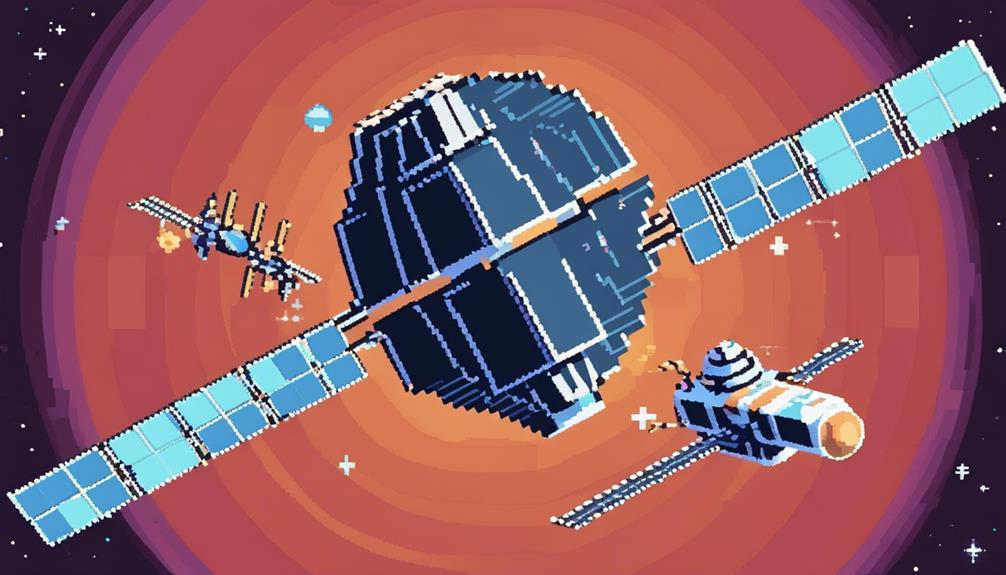
Quantum technology revolutionizes IoT security through its implementation of ultra-secure encryption methods designed to withstand quantum attacks. This cutting-edge technology plays a crucial role in addressing the security challenges faced by IoT networks, providing robust protection for sensitive data transmissions. Key aspects of quantum technology for IoT security include:
- Quantum Key Distribution (QKD): QKD ensures secure key exchange mechanisms for IoT devices, offering a high level of protection against eavesdropping and unauthorized access. This technology enhances the confidentiality and integrity of data transmitted within IoT networks.
- Quantum-Resistant Algorithms: Quantum technology introduces algorithms that are resilient to potential threats posed by quantum computing advancements. By utilizing quantum-resistant algorithms, IoT systems can mitigate the risks associated with evolving technology landscapes and ensure long-term security.
- Vulnerability Mitigation: Quantum technology addresses vulnerabilities present in traditional encryption methods, providing enhanced security measures for IoT networks. By leveraging quantum-enhanced security solutions, organizations can safeguard their IoT infrastructures against sophisticated cyber threats.
- Data Protection: Quantum technology offers advanced encryption techniques that fortify data protection mechanisms within IoT ecosystems. These measures are essential for securing sensitive information and maintaining the trust of users in an increasingly connected world.
5G IoT Satellite Advancements
The integration of satellite technology into the Internet of Things (IoT) landscape has significantly advanced connectivity capabilities, particularly in remote and rural areas. Satellite IoT enables the exchange of data between devices using connectivity from space, surpassing the limitations of terrestrial connectivity. Global IoT initiatives have benefited immensely from the deployment of satellite networks, ensuring seamless communication and data transmission even in the most challenging environments. These advancements have paved the way for the development of satellite-enabled IoT modules that offer robust security measures and scalability for large-scale deployments.
To highlight the key aspects of G IoT Satellite Advancements, the following table provides a concise overview:
| Advancements | Description | Benefits |
|---|---|---|
| Global Connectivity | Utilizing satellite networks to enable global IoT communication, transcending geographical boundaries. | Enhanced reach and accessibility for IoT devices worldwide. |
| Data Exchange Efficiency | Facilitating efficient data exchange between IoT devices through satellite connectivity channels. | Improved data transmission speeds and reliability in diverse environments. |
| Remote Area Coverage | Extending IoT connectivity to remote and rural areas where terrestrial networks may be limited. | Enhanced operational capabilities and innovation opportunities in remote regions. |
These advancements underscore the pivotal role of satellite technology in enhancing IoT connectivity and revolutionizing the way data is exchanged on a global scale.
Satellite IoT Benefits
Enhancing global connectivity and operational efficiency, Satellite IoT offers a reliable and continuous network coverage in remote areas where terrestrial networks are unavailable. This technology has become indispensable for various industries looking to leverage its benefits effectively. Some of the key advantages of Satellite IoT include:
- Global Coverage: Satellite IoT enables connectivity in areas where traditional networks struggle to reach, covering approximately 10% of the world's landmass.
- Real-time Asset Monitoring: Industries such as agriculture, energy, aviation, and maritime can remotely monitor assets in real-time, leading to improved operational efficiency and productivity.
- Enhancing Operational Efficiency: Satellite IoT plays a crucial role in enhancing operational efficiency by providing seamless connectivity and enabling automation and data analysis, aligning with the goals of industries embracing Industry 4.0.
- Industries Embracing Industry 4.0: Sectors like transportation, utilities, and logistics benefit from Satellite IoT by improving safety, efficiency, and asset management, thereby staying competitive in the era of digital transformation.
Satellite IoT not only addresses the current needs of industries but also paves the way for future advancements by expanding network coverage, enabling data collection in challenging terrains, and unlocking new opportunities across various sectors.
Satellite Vs. Terrestrial Iot Modules
Expanding on the comparative analysis of Satellite and Terrestrial IoT modules, the distinct connectivity offerings of each technology become apparent in addressing the challenges of global network coverage and operational efficiency. Satellite IoT modules excel in providing global connectivity, bridging the gaps where terrestrial networks are unavailable or unreliable. These modules leverage satellites to relay data to ground stations, ensuring communication in remote or rural areas. In contrast, terrestrial IoT modules are constrained by geographical limitations and may struggle to provide seamless coverage in challenging environments.
To further highlight the differences between satellite and terrestrial IoT modules, the table below outlines key aspects of each technology:
| Aspect | Satellite IoT Modules | Terrestrial IoT Modules |
|---|---|---|
| Global Connectivity | Offer global coverage, reaching remote and rural regions where terrestrial networks are scarce. | Limited to areas with terrestrial network infrastructure, may face challenges in providing connectivity in remote locations. |
| Environmental Resilience | Resilient to environmental disruptions such as natural disasters or harsh terrains due to direct satellite communication. | Susceptible to environmental interferences, may experience connectivity issues in extreme weather conditions or remote areas. |
| Scalability | Scalable for large-scale deployments due to the broad coverage provided by satellite networks. | Scalability may be limited by the availability and capacity of terrestrial networks, impacting the expansion of IoT deployments on a global scale. |
Overcoming Satellite IoT Challenges

Navigating the intricacies of satellite IoT challenges demands strategic solutions to surmount obstacles and optimize operational efficiency. To overcome these challenges and harness the full potential of satellite-enabled Internet of Things (IoT) technologies, the following key strategies are essential:
- Cost Optimization: Implementing cost-effective solutions to reduce the high initial costs associated with hardware and subscription fees is crucial for enabling global deployment of satellite IoT systems.
- Latency Management: Mitigating latency issues in satellite communication is imperative to ensure real-time data transmission, enabling timely decision-making and enhancing operational efficiency in IoT applications.
- Power Efficiency: Prioritizing power consumption optimization in satellite IoT devices is essential to extend operational longevity, particularly in remote areas where power sources may be limited.
- Security Enhancement: Addressing security concerns within satellite IoT networks is paramount to provide reliable and secure data transmission, safeguarding sensitive information from potential cyber threats and ensuring data integrity.
Types of Satellite IoT Connectivity
Satellite IoT connectivity encompasses various satellite networks and satellite orbit types, each offering distinct advantages for different IoT applications. Some of the prominent satellite networks used for IoT connectivity include Iridium, Globalstar, and Orbcomm. These networks leverage different satellite constellations and orbit types like Low Earth Orbit (LEO), Medium Earth Orbit (MEO), and Geostationary Earth Orbit (GEO) to facilitate diverse IoT communication needs.
| Satellite Network | Orbit Type | Advantages |
|---|---|---|
| Iridium | LEO | Global coverage, low latency for real-time data |
| Globalstar | LEO | Reliable connectivity, suitable for IoT applications |
| Orbcomm | MEO | Medium latency, broader coverage for regional IoT |
LEO satellites, such as those used by Iridium and Globalstar, offer low latency and global coverage, making them ideal for applications requiring real-time data transmission. On the other hand, MEO satellites, like the ones employed by Orbcomm, provide medium latency with broader coverage, making them suitable for regional IoT connectivity needs. GEO satellites, although offering high latency, provide stable coverage over specific geographic areas, which is beneficial for fixed IoT applications such as weather monitoring. Selecting the appropriate satellite network and orbit type is crucial in optimizing IoT connectivity based on specific application requirements.
Frequently Asked Questions
What Is Satellite Iot?
Satellite IoT represents the nexus of connectivity, efficiency, and vast potential in modern technology. Its benefits span across various industries, from enhancing operational effectiveness to enabling real-time monitoring and data analytics. Through satellite communication terminals, IoT devices establish a direct link with satellites, facilitating seamless data exchange globally. This revolutionary technology revolutionizes sectors like Agriculture, Energy, Aviation, and Maritime, paving the way for enhanced productivity and automation.
What Are the 4 Types of Iot?
The four main types of IoT include Consumer IoT, Commercial IoT, Industrial IoT (IIoT), and Environmental IoT. Consumer IoT involves connected devices like smart home appliances and wearables for personal use. Commercial IoT applications are found in retail, healthcare, and hospitality sectors to enhance business efficiency and customer experience. Industrial IoT focuses on integrating IoT devices in industrial settings for data-driven insights, automation, and productivity improvements. Environmental IoT monitors environmental factors for sustainability and resource management.
What Are Some Examples of Iot?
Smart agriculture utilizes IoT for precision farming, while connected healthcare relies on IoT devices for remote patient monitoring. Industrial automation integrates IoT for efficient production processes. Smart cities leverage IoT technology for traffic management and energy optimization. Wearable technology such as health trackers exemplifies personal IoT applications. These examples showcase how IoT enhances various sectors through data collection, analysis, and automation, leading to improved operational efficiency and innovative solutions.
What Are the Challenges of Satellite Iot?
Connectivity issues, data transmission, network latency, power consumption, and security concerns are critical factors affecting satellite IoT. Challenges arise in maintaining seamless connectivity, ensuring efficient data transmission, minimizing network latency, optimizing power usage, and addressing security vulnerabilities. These complexities demand robust solutions to overcome obstacles in satellite IoT deployment and operation. Organizations must navigate these hurdles to harness the full potential of satellite-enabled IoT technologies.
